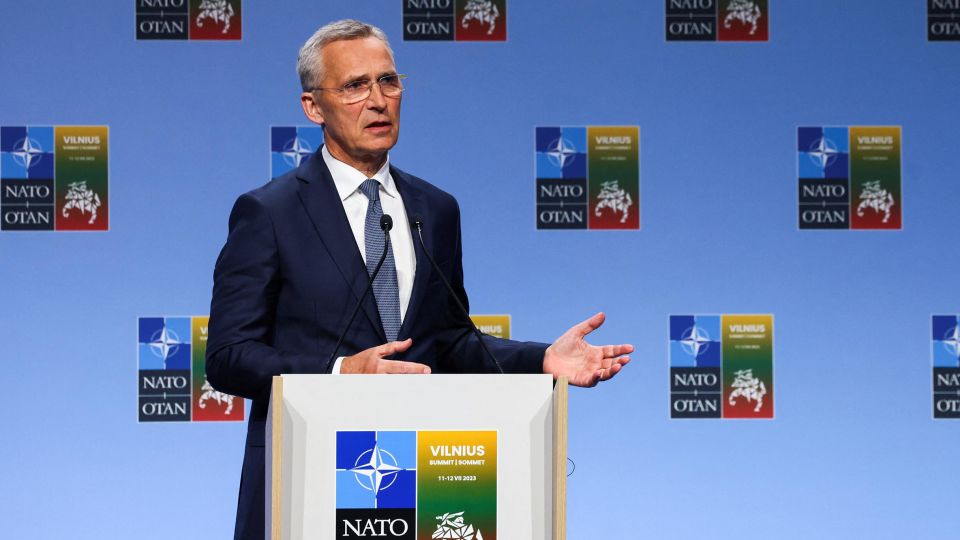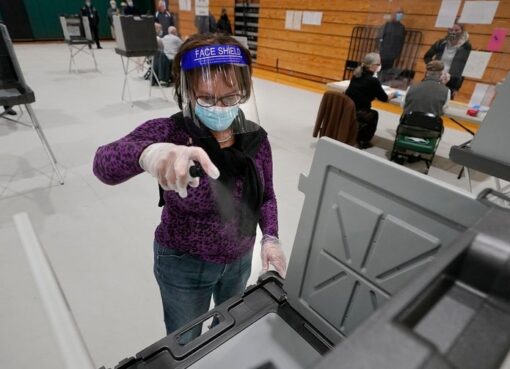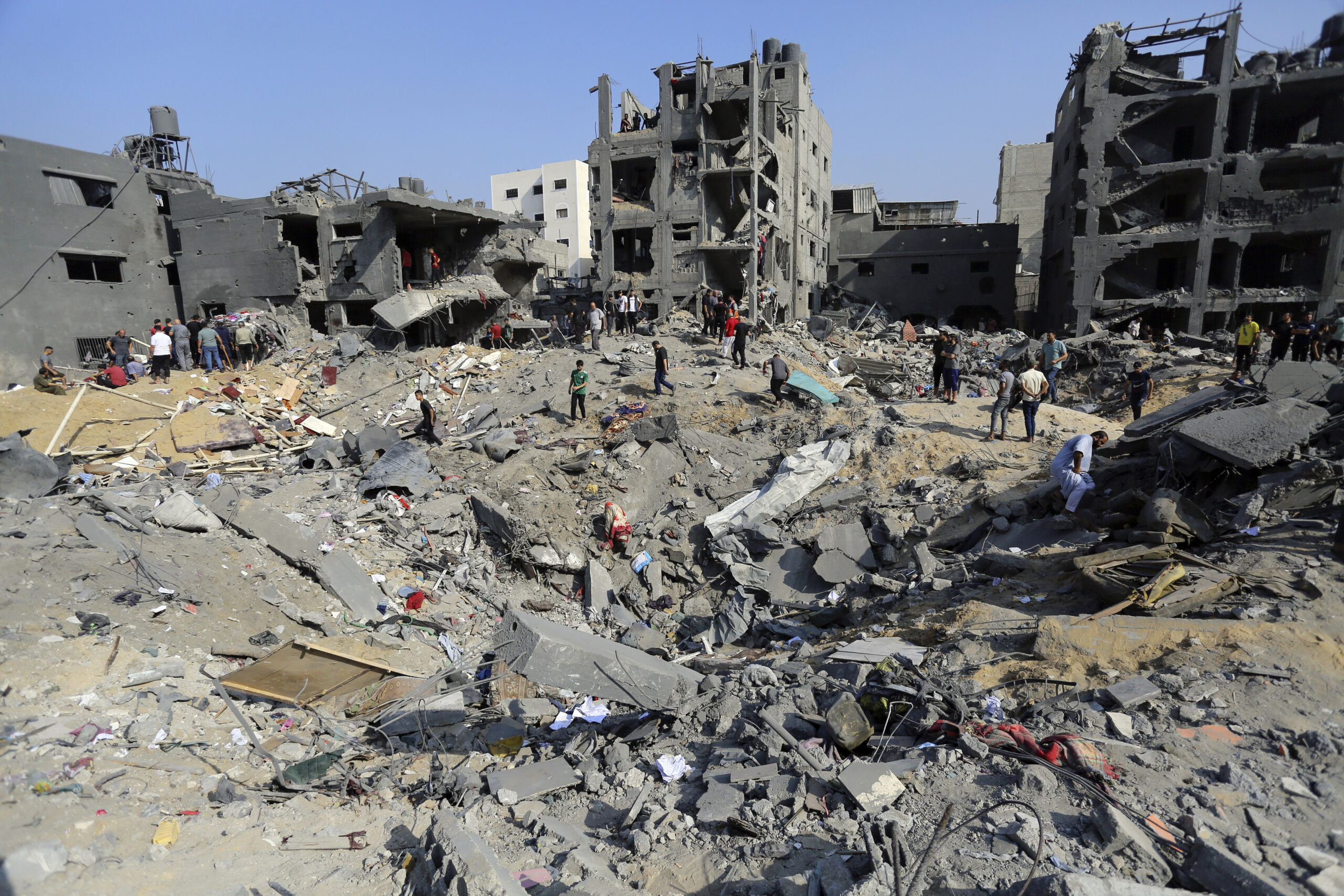The presence of four Asia-Pacific leaders at the NATO summit this week suggests that Ukraine is not the only major security issue on the agenda of the European-North American defense alliance.
The war in Ukraine has brought members of the US-led alliance closer than at any time since the Cold War, and on Monday NATO Secretary General Jens Stoltenberg summed up their collective concerns that what is happening in Ukraine today could occur in Asia tomorrow.
“The Chinese government’s increasingly coercive behavior abroad and repressive policies at home challenge NATO’s security, values, and interests,” Stoltenberg wrote on the Foreign Affairs website.
Autocratic nations, including China, were looking at Russia’s actions in Ukraine, and weighing the costs and benefits of offensive action, he said.
On Tuesday the US-led alliance underscored these concerns, making several references to China in a strongly worded communique issued midway into the two-day summit, in which it said Beijing’s stated ambitions posed “systemic challenges” to “Euro-Atlantic security.”
While noting the alliance remained “open to constructive engagement” with China, it singled out what it said was the “deepening strategic partnership” between Beijing and Moscow and their “mutually reinforcing attempts to undercut the rules-based international order.”
And in language that closely mirrored Stoltenberg’s earlier remarks, the leaders’ communique condemned China’s confrontational rhetoric and disinformation.
China employs a “broad range of political, economic, and military tools to increase its global footprint and project power, while remaining opaque about its strategy, intentions and military build-up,” noted the communique, which called on Beijing “to abstain from supporting Russia’s war effort in any way.”
While neither Stoltenberg nor the joint communique named the island of Taiwan, the self-governing democracy is the most obvious point of comparison with recent events in Europe, given China’s ruling Communist Party remains committed to unifying it with the mainland – by force if necessary.
“When I visited Japan and South Korea at the start of this year, their leaders were clearly concerned that what is happening in Europe today could happen in Asia tomorrow,” Stoltenberg said Monday.
For its part, China says Taiwan is an internal matter and it sees no role for countries in the region, let alone NATO members, to be interfering.
“We will not allow anyone or any force to meddle in China’s own affairs under the disguise of seeking peace,” Foreign Ministry spokesperson Wang Wenbin said at a regular press briefing in May.
Taiwan’s Defense Ministry noted high numbers of Chinese military aircraft in the skies around the island on Wednesday after the NATO communique was issued.
In the hours after 7 a.m. local time, it said 30 People’s Liberation Army aircraft were detected, including 23 that either crossed the median line of the Taiwan Strait or entered the southeastern and southwestern sections of its air defense identification zone.
That activity followed 32 Chinese warplanes making similar flights as of 6 a.m. local time.
The highest number of Chinese planes Taiwan has noted crossing the median line was 56 in October 2021.
CNN reporters explain one of the most contentious issues of US-China relations
Four leaders with united aim
The Asia-Pacific contingent at the NATO talks includes Japanese Prime Minister Fumio Kishida, South Korean President Yoon Suk Yeol, Australian Prime Minister Anthony Albanese and New Zealand Prime Minister Chris Hipkins.
All four nations have expressed views that what has happened in Ukraine cannot happen in the Pacific.
Japanese Prime Minister Fumio Kishida waves before departing on a government plane on July 11, 2023, for the NATO summit.
Mirna Galic, senior policy analyst at the US Institute of Peace, said the presence of the four Pacific leaders in Vilnius, Lithuania, “is a testament to … [NATO’s] interest in the Indo-Pacific and the focus on the challenges that China poses for the alliance.”
On that point, Stoltenberg looks to be in lockstep with US President Joe Biden, with the two pledging to strengthen NATO ties to the Pacific when they met at the White House last month.
And the leaders of the four Pacific nations also seem to be striving for a united approach.
Kim Sun-hye, senior secretary to the South Korean President, said Yoon will preside over a side meeting of four Pacific countries to strengthen common awareness, solidarity, and cooperation on emerging security threats.
US President Joe Biden meets with NATO Secretary General Jens Stoltenberg in the Oval Office of the White House on June 13, 2023.
Conflicting views on NATO in Asia
There may be a push for greater involvement from Asia-Pacific leaders in the alliance, but there’s no consensus on the role NATO should take in the Pacific.
While Stoltenberg and others would like to see NATO open a liaison office in Japan to enable smoother communications with its Pacific partners, French President Emmanuel Macron is against such a plan, and has informed the secretary general of Paris’ opposition, according to Japanese public broadcaster NHK.
The French stance is reportedly that NATO is a North American and European alliance, not a global one.
France can effectively veto any Tokyo office plan as establishing it would require unanimous approval of the 31 NATO nations, NHK reported.
The idea of not letting NATO’s focus drift outside of the “North Atlantic” in its name is backed up by Article 5 of the NATO treaty, its mutual defense clause, which stipulates an armed attack on one alliance member is to be treated like an attack on all.
However, the article explicitly limits the response to attacks that occur in Europe and North America.
So military actions against US forces stationed in Japan or South Korea, or even the US Pacific territory of Guam, do not fall under NATO’s collective self-defense remit.
But outside of NATO, its members have been increasing their military visibility in the Pacific.
British forces have been training in Japan; a Canadian warship was accompanying a US destroyer when the American vessel was involved in a near collision with a Chinese warship in June; and German Defense Minister Boris Pistorius announced at the Shangri-La Dialogue defense summit last month that Berlin will send two naval vessels to the Pacific next year.
France, despite its opposition to a liaison office in Tokyo, is a frequent military visitor to the Pacific, with 10 fighter jets participating in exercises with the US in the Pacific islands even as the NATO summit is about to start in Lithuania.
And those deployments display what Stoltenberg, the secretary general, said in his op-ed.
“NATO is a regional alliance of Europe and North America, but the challenges we face are global,” he wrote, noting the summit invitations for the Pacific leaders.
“We must have a common understanding of the security risks we face and work together to strengthen the resilience of our societies, economies, and democracies.”
CNN






